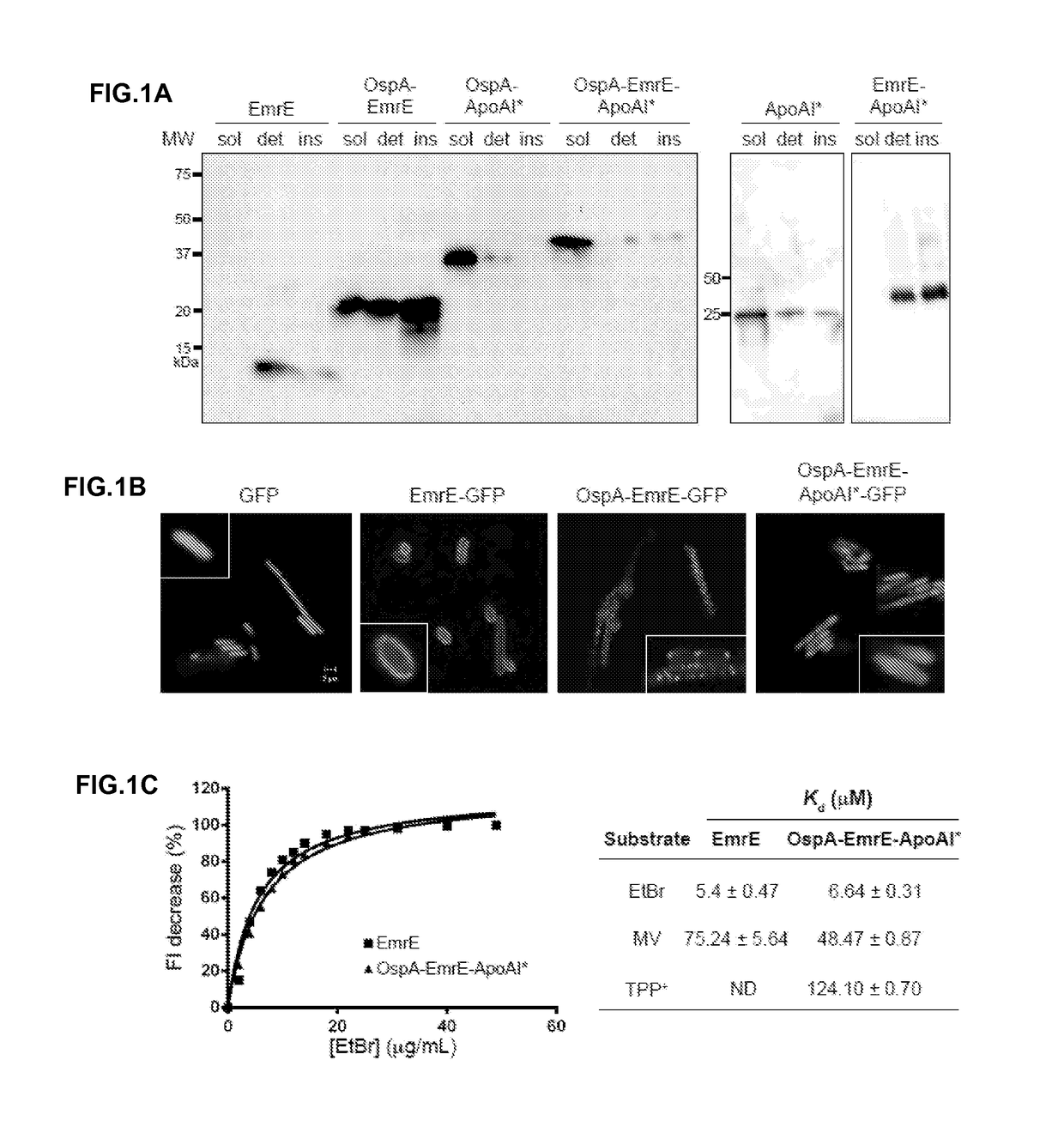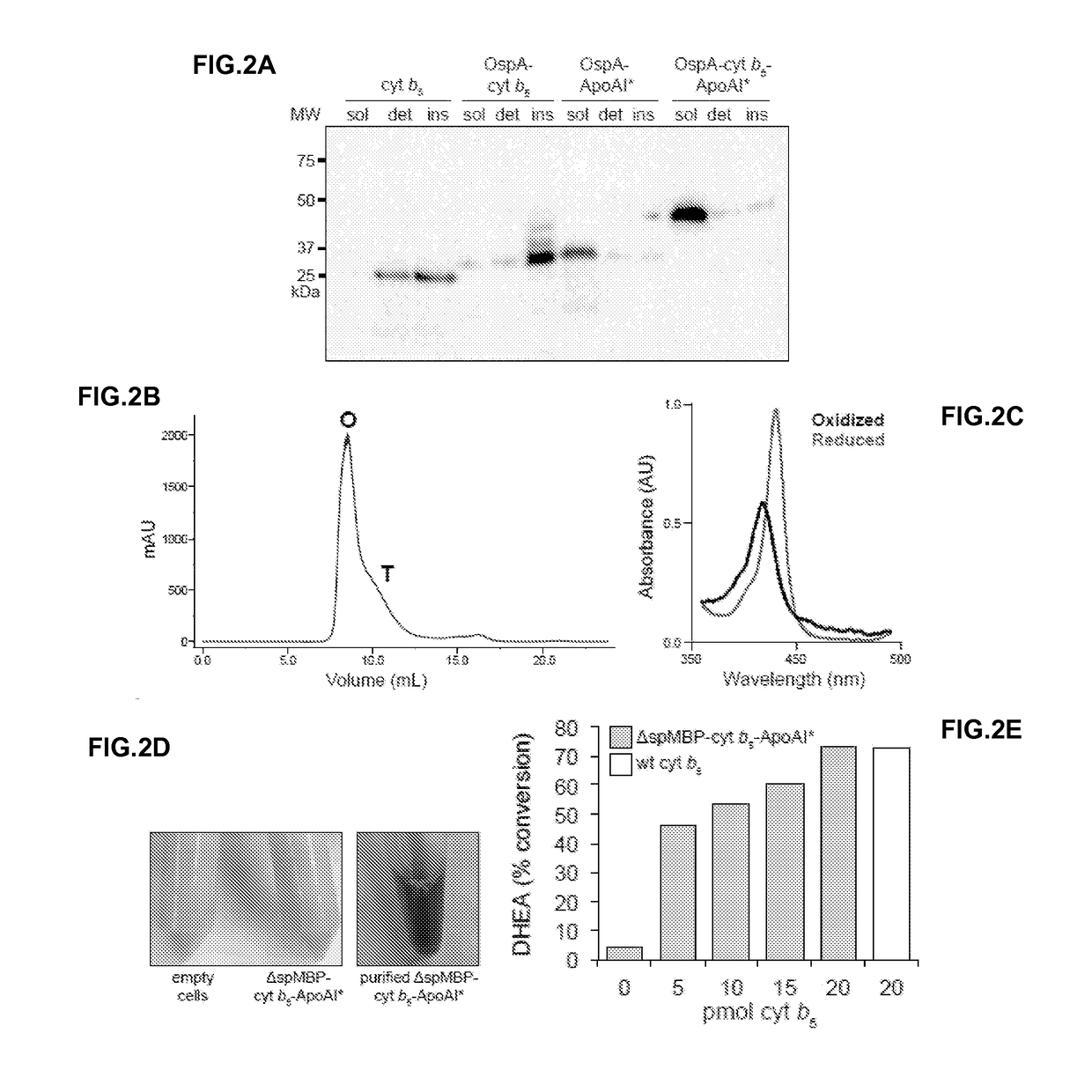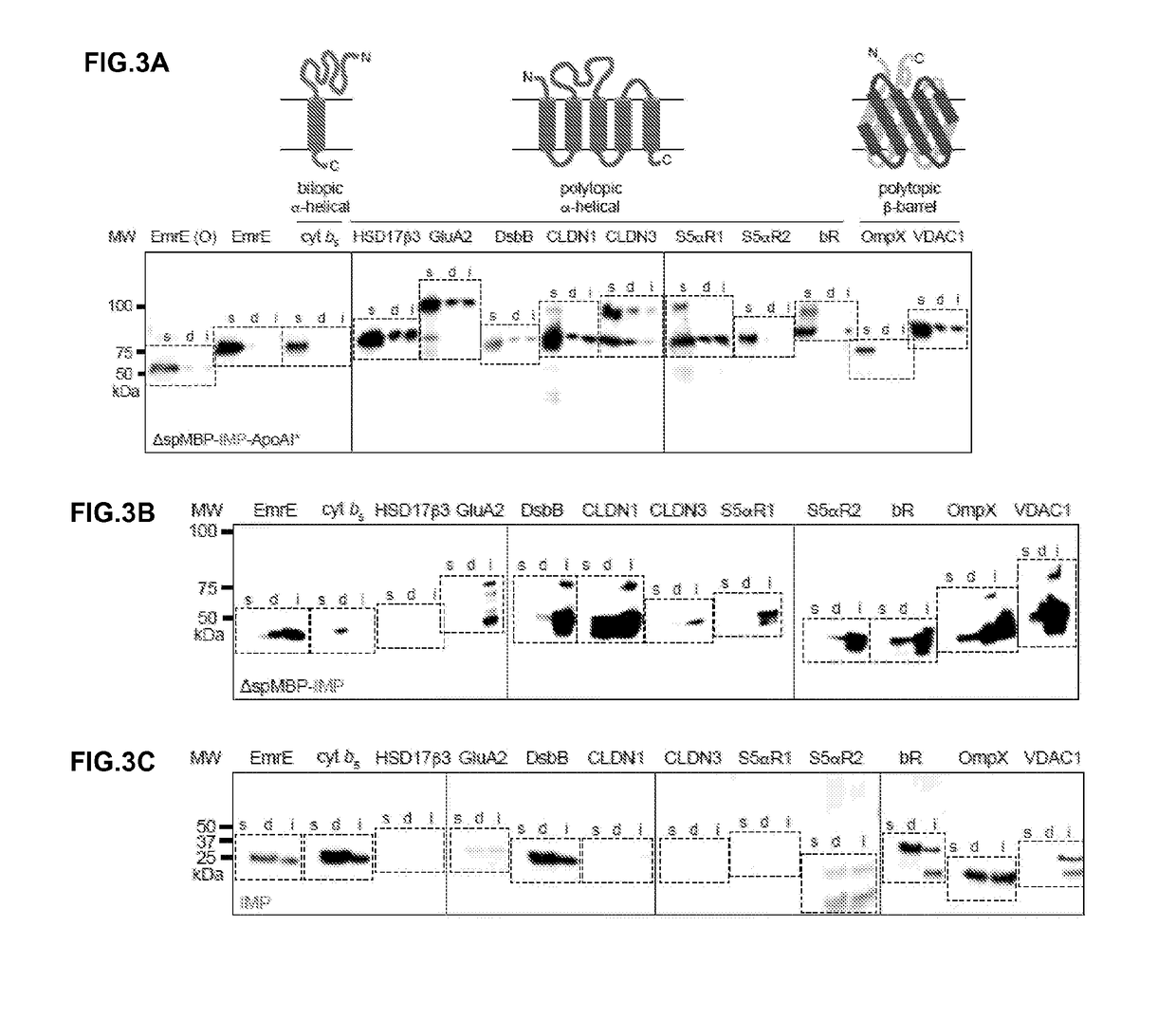Compositions and methods for making water-soluble integral membrane proteins
a technology of integral membrane proteins and membrane proteins, applied in the field of compositions and methods for making water-soluble integral membrane proteins, can solve the problems of hampered understanding of this important class of proteins, lack of generally applicable methods, and low level of cell or cell-free systems to support functional and/or structural characterization, etc., to achieve high expression levels, promote solubilization, and functional and structural studies
- Summary
- Abstract
- Description
- Claims
- Application Information
AI Technical Summary
Benefits of technology
Problems solved by technology
Method used
Image
Examples
example 1
and Methods
[0081]Bacterial Strains and Growth Conditions—
[0082]E. coli strain DH5α was used for cloning while protein expression was carried out in E. coli strain BL21(DE3). Overnight cultures were diluted 1:500 in terrific broth (TB) supplemented with the appropriate antibiotic (50 μg mL−1 kanamycin or 100 μg mL−1 ampicillin) and grown at 30° C. until culture optical density (OD600) reached ˜1.0. The temperature was then lowered to 16° C. and protein expression was induced with isopropyl-β-D-thiogalactoside (IPTG) to a final concentration of 0.1 mM. Cells were collected 20 h post induction.
[0083]Plasmid Construction—
[0084]The basic construct in these studies was a tripartite fusion between a soluble cytoplasmic decoy protein, a target IMP, and N-terminally truncated human ApoAI (Δ1-43; ApoAI*) in pET28a (Novagen). For the decoy, the N-terminal domain (residues 4-93) of the engineered outer surface protein A (OspA) of Borrelia burgdorferi (Makabe et al., “The Promiscuity of Beta-Str...
example 2
ic ApoAI* Renders Bacterial EmrE Water Soluble
[0107]Membrane proteins are classified structurally as β-barrel or α-helical bundles. β-barrels are typically expressed as inclusion bodies, purified and refolded for structural studies whereas α-helical bundles are less likely to produce soluble active forms after refolding. To demonstrate the SIMPLEx concept, a small (110 amino acids) polytopic α-helical IMP from E. coli named ethidium multidrug resistance protein E (EmrE) was chosen, which is comprised of four transmembrane α-helices having 18-22 residues per helix with very short extramembrane loops. EmrE is the archetypical member of the small multidrug resistance (SMR) protein family in bacteria and confers host resistance to a wide assortment of toxic quaternary cation compounds by secondary active efflux (Bay et al., “Spectroscopic Analysis of Small Multidrug Resistance Protein EmrE in the Presence of Various Quaternary Cation Compounds,”Biochim Biophys Acta 1818:318-1331 (2012),...
example 3
tion of Solubilized EmrE in the Cytoplasm
[0110]To determine the localization of the different EmrE chimeras, a green fluorescent protein (GFP) domain was added to the C-terminus of each construct. Bacterial cells synthesizing GFP-tagged membrane proteins typically exhibit a fluorescent signal that is circumferential around the cell periphery, reflecting uniform distribution of the protein within the membrane. As expected, EmrE lacking the OspA and ApoAI* domains localized in the membrane as evidenced by uniform green fluorescence appearing at the periphery of cells expressing EmrE-GFP (FIG. 1B). In contrast, diffuse cytoplasmic fluorescence was observed for cells expressing the solubilized OspA-EmrE-ApoAI*-GFP chimera (FIG. 1B), consistent with the fluorescence patterns seen for soluble GFP-tagged proteins or for GFP expressed alone. Expression of the GFP-tagged OspA-EmrE, which lacked the solubilizing ApoAI* domain, resulted in bright punctate fluorescent foci around the periphery ...
PUM
| Property | Measurement | Unit |
|---|---|---|
| concentrations | aaaaa | aaaaa |
| temperature | aaaaa | aaaaa |
| pH | aaaaa | aaaaa |
Abstract
Description
Claims
Application Information
 Login to View More
Login to View More - R&D
- Intellectual Property
- Life Sciences
- Materials
- Tech Scout
- Unparalleled Data Quality
- Higher Quality Content
- 60% Fewer Hallucinations
Browse by: Latest US Patents, China's latest patents, Technical Efficacy Thesaurus, Application Domain, Technology Topic, Popular Technical Reports.
© 2025 PatSnap. All rights reserved.Legal|Privacy policy|Modern Slavery Act Transparency Statement|Sitemap|About US| Contact US: help@patsnap.com



